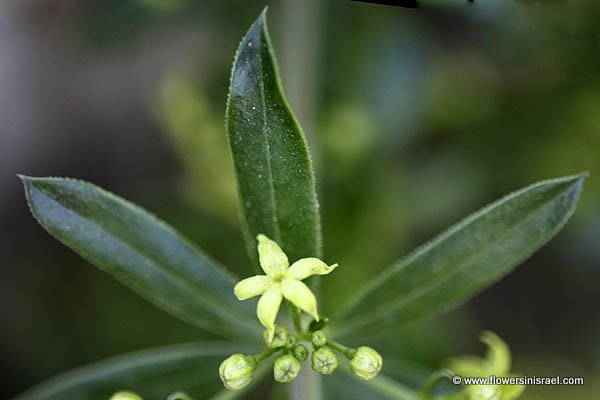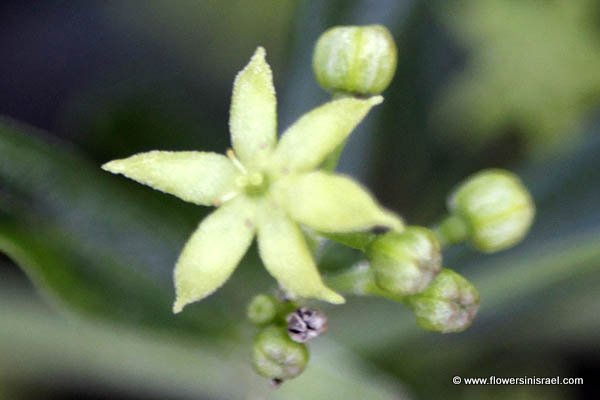Galium philistaeum forma calvescens, דבקה פלשת
| Scientific name: | Galium philistaeum Boiss. | |
| Synonym name: | Galium lasianthum Eig., Galium philistaeum forma calvescens Feinbrun | |
| Common name: | - | |
| Hebrew name: | דבקה פלשת | |
| Family: | Rubiaceae; Madder, Bedstraw or Coffee family; פואתיים |

|
| Life form: | Annual | |
| Stems: | 15-30 cm high | |
| Leaves: | Whorled; entire; lanceolate or narrow elliptical, smooth margin | |
| Inflorescence: | Dense clusters of tiny, fragrant flowers | |
| Flowers: | Hermaphrodite; corolla with scattered minute hairs outside | |
| Fruits / pods: | Fruit is variable, sometimes forming multiples | |
| Flowering Period: | March, April, May | |
| Habitat: | Sand | |
| Distribution: | Mediterranean Woodlands and Shrublands, Shrub-steppes | |
| Chorotype: | Mediterranean | |
| Summer shedding: | Ephemeral |

Derivation of the botanical name: Galium from Greek word gala, "milk," and alluding to the fact that certain species were used to curdle milk. philistaeum, from Philistine. lasianthum, lasios λαιοϛ, shaggy, wooly, hairy; anthos ανϑοϛ, flower; woolly flowered.
|